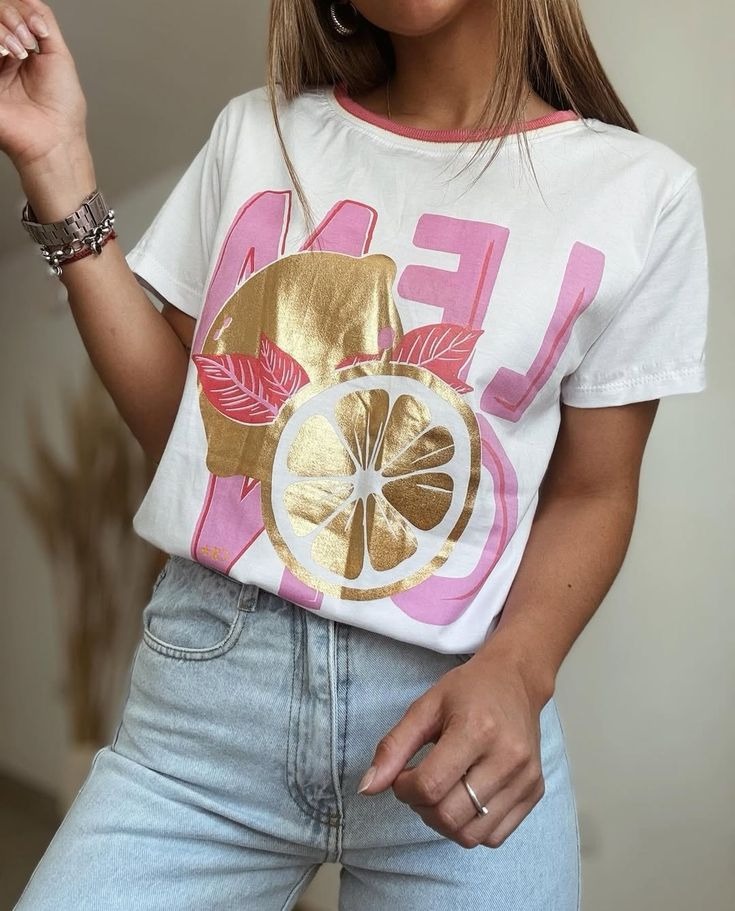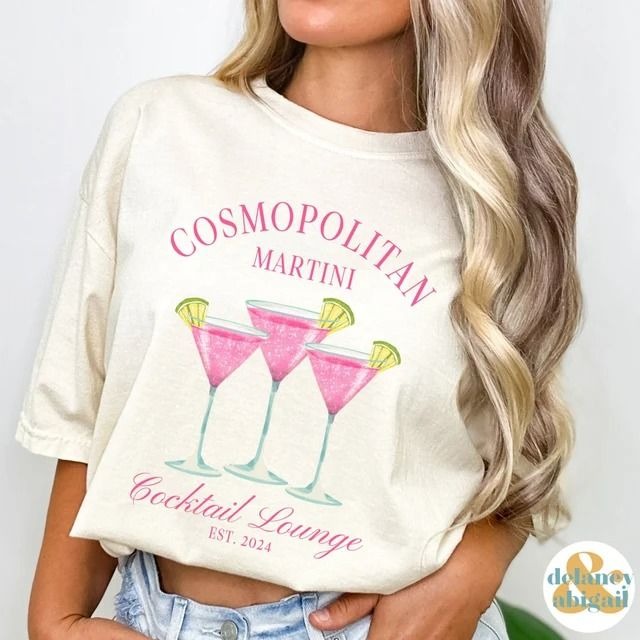Introduction
The T shirt remains a garment of remarkable simplicity that conceals a vast complexity of meaning and possibility. Though it appears modest in form and function, its history weaves through social transformation, artistic innovation, economic fluctuation, environmental concern, and technological evolution. In this extensive exploration we journey through layers of context that inform the T shirt’s past present and future. This narrative unfolds in thematic sections that together form a tightly woven tapestry without relying on enumerated lists or visible formatting effects for headings. Each section flows naturally into the next offering depth and reflection on facets both familiar and unexpected.
Origins in Practicality and Early Shifts
The story of the T shirt begins in contexts where comfort and ease of movement mattered most. In hot climates or during strenuous labor the need for a lightweight garment under heavier outer layers took root. Early versions appeared in settings where long sleeved shirts proved cumbersome. Workers and service personnel adopted simpler cotton shirts that supplied relief from heat and friction. Over time such shirts migrated beyond their initial purpose. Photographs from past eras show laborers and sailors appearing in plain cotton shirts in informal moments suggesting early shifts in perception. Such glimpses reveal how a garment once hidden beneath uniforms began to emerge in public view. The gradual acceptance of visible underlayers paralleled broader social changes in notions of propriety and style. As informal dress norms loosened the T shirt moved closer to everyday outerwear even if its functional origins remained evident in its design simplicity.
Influence of Visual Culture on Perception
Cinema photography and early advertising played crucial roles in reframing the T shirt. Scenes depicting protagonists in plain shirts and simple pants evoked a sense of authenticity and youthful rebellion. When actors stepped onto screen wearing a basic shirt without ornate detail they conveyed a stripped down sense of self that resonated with audiences. Press images of athletes models or everyday figures clad in simple cotton shirts further cemented the garment’s emergence as visible attire. These images diffused through magazines and later digital archives reinforcing the T shirt’s identity as an item of relaxed confidence. As media representation shifted the T shirt joined evolving ideas about modern life informality and self expression. It became a mirror reflecting changing values around work leisure and individuality.
Growth of Graphic Expression and Wearable Art
With advances in fabric printing techniques the T shirt transformed into a dynamic vehicle for graphic expression. As screen printing matured artists musicians activists and everyday people discovered that the plain surface of a shirt could serve as a mobile gallery for imagery slogans symbols and portraits. Music tours printed album art on shirts enabling fans to carry visual reminders of performances. Social movements printed messages that traveled on bodies through streets rallies and gatherings. Independent creators collaborated with small print studios or used emerging digital tools to translate artwork onto fabric. This surge in graphic innovation turned each shirt into a personal statement or collective signifier. The T shirt evolved beyond mere clothing into a wearable canvas bridging art commerce and community. Yet this blossoming also prompted reflection on fair use and appropriation of imagery stirring conversations about intellectual property rights compensation and authenticity in creative practice.
Global Diffusion and Local Adaptation
As production networks expanded globally the T shirt acquired a place in wardrobes across continents. Factories in diverse regions manufactured vast quantities of shirts at varying levels of quality and cost. While the basic form often looked similar its significance shifted with local culture. In some societies printed shirts served as tools of political solidarity referencing familiar symbols language and history. In others local artisans incorporated traditional dyeing embroidery or printing techniques onto simple shirt forms creating garments that blended heritage craft with modern wearability. Tourism propelled further diffusion as visitors bought shirts bearing stylized landmarks or phrases serving as souvenirs and conversation starters. At the same time secondhand markets circulated shirts far from their origin introducing influences that shaped local tastes. This interplay of global uniformity and regional reinterpretation highlights the T shirt’s role as both universal staple and medium for cultural nuance.
Material Journeys and Supply Chain Complexity
Beneath the visible simplicity lies a complex chain of material sourcing and manufacturing. Cotton cultivation demands attention to land water labor and market dynamics. Alternative fibers such as organic cotton recycled blends or plant based fabrics emerge in response to environmental and ethical pressures though they may involve higher costs or specialized processes. Yarn spinning knitting dyeing and finishing each stage carries potential for innovation or risk of pollution and exploitation. Transportation across oceans links remote farms to factories to distribution centers then to retail shelves or digital orders fulfilled direct to doorsteps. This chain often spans multiple jurisdictions each with its own standards and enforcement realities. Greater transparency and traceability efforts aim to illuminate these pathways yet challenges persist as subcontracting and informal production complicate oversight. Recognizing the full journey of a single T shirt encourages awareness of hidden impacts and shared responsibility among producers consumers and policymakers.
Economic Landscapes and Market Transformations
The T shirt industry sits at the intersection of mass consumer demand niche creativity and luxury aspiration. Fast paced retailers produce vast volumes of low cost shirts encouraging frequent replacement. At the same time independent designers leverage direct channels to reach audiences seeking unique or story rich garments. Luxury houses may reimagine the basic shirt using premium fabrics or artisanal techniques commanding elevated price points. Digital platforms enable print on demand services reducing inventory risk and empowering small ventures. Crowdfunding initiatives seed custom lines while social media marketing can spark viral interest overnight. These dynamics fuel both opportunity and volatility. Brands must balance creativity speed and sustainability while consumers navigate choices shaped by personal values budgets and awareness of environmental or labor implications. The ever shifting market reflects broader tensions between abundance and scarcity novelty and durability mass production and mindful creation.
Environmental Reflections and Ethical Imperatives
The environmental toll of apparel production centers prominently on the T shirt given its ubiquity. Conventional farming of fibers can strain water resources and involve chemical inputs. Dyeing and finishing processes may pollute ecosystems absent effective treatment. Overconsumption leads to textile waste that burdens landfills and incineration. In reaction movements advocating slower fashion and circular approaches call for durable design repair upcycling and recycling programs. Some brands commit to ecofriendly fibers transparent sourcing and fair labor practices though verifying claims remains complex. Consumer education emphasizes care practices to extend life of garments and awareness of resale or donation channels. Collaborative initiatives seek infrastructure for collecting used shirts to repurpose fibers or create new items. This shift towards regenerative practices requires coordinated effort among industry stakeholders governments and communities as well as willingness from consumers to embrace longevity over disposability.
Technological Innovations in Fabric and Experience
Advances in textile research bring novel capabilities to the T shirt. Performance oriented fabrics offer moisture management antimicrobial function and sun protection responding to active lifestyles. Blends merging natural and synthetic components balance comfort durability and special functionality. Emerging developments explore adaptive fabrics that respond to temperature changes or incorporate microcapsules for controlled release of skincare or fragrance. Preliminary prototypes examine conductive threads and washable sensors opening paths towards wearable technology integrated seamlessly into daily attire. Design processes also evolve. Digital pattern making and three dimensional scanning enable personalized fits reducing returns and waste. Direct to garment printing and virtual sampling accelerate creation of intricate visuals without extensive physical prototypes. Augmented reality tools allow consumers to preview how a shirt appears on their own body enhancing confidence in online purchases. As these technologies converge the T shirt becomes a laboratory for experimentation blending tradition with innovation.
Personalization and Community Engagement
A defining aspect of T shirt culture lies in personalization. Platforms allow individuals to upload artwork text or photos to craft unique shirts often tied to events personal milestones or creative impulses. Local print studios facilitate quick turnarounds for small runs supporting events fundraisers or business branding. Artisans apply hand based methods such as tie dying embroidery block printing or appliqué transforming simple bases into one of a kind pieces reflecting individual style and heritage craft. Community oriented projects invite collaboration through crowd sourced design contests or charitable initiatives that produce shirts raising funds and awareness. These practices foster meaningful connections between creators consumers and causes though they also raise discussions about fair compensation intellectual property and actual ecological footprint of limited runs. Engaging thoughtfully in personalization cultivates a sense of ownership and belonging that resonates beyond the garment itself.
Expressions of Activism and Solidarity
Throughout eras of social change the T shirt has served as visible badge of belief. Protesters don shirts with slogans images or symbols that encapsulate collective demands broadcasting messages through public spaces. Distribution of such shirts at rallies or online campaigns amplifies reach and cohesion among participants. Activist merchandise generates funds supporting movements though questions arise about depth of engagement when purchase substitutes deeper involvement. Such tensions highlight the need for authenticity in activism and mindful consumption of cause related apparel. The act of wearing a shirt bearing a message can spark dialogue and reflection yet must align with sustained action. The T shirt thus stands as a tool for solidarity communication and sometimes critique of performative gestures urging wearers to consider meaning behind the imagery.
Role in Subcultures and Streetwear Dynamics
Within various subcultures the T shirt functions as emblem of identity. Scenes such as skateboarding music genres or gaming communities adopt specific graphics logos or insider references signaling membership and attitude. Streetwear culture often elevates the basic shirt through limited collaborations hype driven releases and secondary market trading that transforms a simple cotton garment into status object. Scarcity combined with cultural cachet fuels desire and often frustration among participants who navigate access and price barriers. These phenomena illustrate how the T shirt negotiates between democratic accessibility and exclusivity created by marketing and community perception. Beyond hype cycles some subcultures maintain DIY ethos crafting own graphics or customizing base shirts reflecting values of autonomy creative expression and resistance to mainstream norms.
High End Reinterpretation and Collaborative Creativity
High end designers periodically revisit the basic shirt injecting conceptual elements or luxury craftsmanship. Embroidery embellishments unconventional cuts or choice of rare fibers reposition the T shirt as collectible piece or statement item. Collaborations between prominent fashion houses and streetwear labels blur boundaries creating garments that command attention and sometimes controversy. Such endeavors highlight the T shirt’s cultural centrality and ability to carry messages about artistry brand identity and social status. Yet they also raise questions about accessibility and sustainability when simple forms are repurposed into high price limited editions. The dialogue between mass market staples and luxury reinterpretation underscores tensions in fashion regarding democratization exclusivity creativity and commerce.
Psychological Resonance and Emotional Attachments
At an individual level many people develop strong attachment to certain shirts that evoke memories of events trips relationships or personal milestones. A familiar shirt may become part of daily uniform offering comfort reassurance and expression of self. Psychological research notes clothing choices influence mood confidence and perception. The T shirt’s bland form allows wearer to project identity or mood through selection of graphic or color while retaining sense of ease. Gifted shirts carry emotional significance linking giver and recipient through shared moments. Over time wear and fading become part of the garment’s narrative fabric ingrained with personal history. Caring practices that extend shirt life further strengthen bonds between wearer and object demonstrating interplay between material culture and personal memory.
Guidance on Care Repair and Longevity
Extending a T shirt’s lifespan demands mindful care routines. Washing inside out using gentle cleansers avoiding excessive heat in drying and air drying flat helps preserve fabric integrity and printed visuals. When signs of wear appear patching small holes reinforcing seams or creatively reprinting faded graphics can renew cherished pieces. Workshops and online communities share repair techniques fostering skills that counter throwaway culture. Passing down favorite shirts through mending circles builds intergenerational connections and appreciation for craftsmanship. Embracing repair and reuse aligns with environmental goals and deepens emotional relationship to clothing resisting impulse replacement patterns.
Challenges in Labor Practices and Fair Production
Behind many T shirts lie labor conditions that vary widely. Some factories uphold safe environments fair wages and worker voice while others remain opaque with risks of exploitation. Advocacy groups push for supply chain audits transparency reporting and certification schemes though enforcement challenges persist amid subcontracting and informal production. Consumers express desire for ethically produced garments yet verifying claims can be difficult. Collaborative efforts among brands non governmental organizations and policy makers seek to establish standards and mechanisms ensuring worker wellbeing. Educating consumers about complexities of production fosters empathy and informed choices supporting initiatives that uplift communities behind the garments.
Digital Influence on Creation and Consumption
Digital platforms transform how T shirts come into being and reach wearers. Designers leverage online tools to sketch prototypes share samples virtually and gather feedback quickly. E commerce platforms enable global reach for small creators and large brands alike while social media amplifies trends influencing design decisions and demand. Influencers showcase styling ideas driving interest in particular graphics slogans or fits. Data analytics help brands predict preferences manage inventory and tailor offerings though reliance on constant novelty can exacerbate overproduction. Virtual try on applications ease fit concerns yet also encourage impulse buying. Balancing digital efficiency with mindful design and consumption remains key to aligning technology with sustainability and human connection.
Educational and Institutional Applications
Beyond fashion the T shirt serves varied roles in educational settings team events and institutional contexts. Schools provide shirts to foster unity commemorate milestones or teach design principles. Nonprofit organizations distribute shirts to volunteers supporters spreading awareness while raising funds. Corporate teams use branded shirts for cohesion in events or promotional efforts. Specialized T shirts support therapeutic contexts for patients or identification in studies. These uses illustrate T shirt’s adaptability as communication tool and functional garment offering comfort and symbolic value across myriad scenarios.
Artisanal Production and Cultural Heritage
While mass production dominates much of the market artisanal producers keep alive traditional methods applied to the simple shirt form. Hand dyeing embroidery block printing or applique techniques transform basic cotton shirts into wearable expressions of cultural heritage. Artisans sustain local knowledge and livelihoods through small batch runs that appeal to consumers seeking authenticity. Digital platforms help artisans reach wider audiences while preserving stories behind each piece. Scaling such efforts without losing integrity poses challenge but collaborative networks and supportive consumer interest in craft can nurture growth of sustainable local economies tied to region specific aesthetics and values.
Emerging Frontiers in Smart Garments
Research in wearable technology points toward integration of sensors circuits and connectivity within everyday attire including T shirts. Prototypes demonstrate ability to monitor vital signs adjust temperature or interact with devices opening possibilities in health sports and entertainment contexts. Challenges include ensuring washability comfort durability and affordability. The T shirt’s neutral familiarity may ease adoption of smart features among consumers. Future iterations could offer seamless integration of technology with minimal disruption to garment’s simplicity enabling new forms of interaction between body and environment. Ethical considerations around data privacy and equitable access must guide development of such innovations.
Toward Circular Systems and Regenerative Models
Envisioning a circular paradigm elevates the T shirt as focal point for reuse recycling and regenerative practices. Systems that collect worn garments for fiber recovery or remanufacturing aim to reduce reliance on virgin resources. Biodegradable materials and closed loop processing hold promise though require infrastructure and investment. Designer approaches that anticipate end of life incorporate modular elements or easy disassembly enabling parts to be repurposed. Collaborative networks among brands recyclers and policymakers work to implement take back programs and material recovery facilities. Consumer education about repair resale and recycling completes the ecosystem fostering responsible lifecycle management. Achieving meaningful circularity demands shared commitment to reshape production consumption and waste management patterns.
Reflections on Collective Responsibility
The trajectory of the T shirt intersects individual choices and systemic forces. Each purchase decision carries weight influencing demand for sustainable practices or perpetuation of unsustainable cycles. Collective action through advocacy support for transparent supply chains and investment in circular infrastructure can steer industry toward resilience and ethical integrity. At the same time creativity in design and community engagement nurtures deeper connection to garments encouraging care and longevity. Recognizing the T shirt’s dual nature as everyday item and symbol of broader dynamics invites a holistic perspective appreciating comfort personal expression and the complex networks enabling its existence.
Imagining the Next Chapters
Looking ahead the T shirt will continue adapting to shifting cultural technological and environmental contexts. Innovations in materials and fabrication may yield garments that heal skin monitor health or adapt to surroundings. Digital immersive experiences might let wearers customize visuals in real time blurring boundaries between physical and virtual expression. Community driven initiatives could pioneer new models of shared ownership repair cooperatives or regional craft resurgence. Amid these possibilities the core appeal of the T shirt endures its simplicity neutrality and capacity to carry messages both personal and collective. The ongoing challenge lies in harnessing innovation and creativity responsibly ensuring that the T shirt remains not only a comfortable staple but also a vessel for ethical progress and meaningful connection.
Conclusion
The T shirt’s journey from a hidden underlayer to a global cultural icon reveals layers of meaning embedded in a deceptively simple form. Its evolution reflects advances in technology shifts in social norms and ongoing dialogues about identity community and environment. As this exploration demonstrates the T shirt functions simultaneously as canvas for art activism branding and personal memory as well as object enmeshed in complex supply chains and environmental systems. Embracing the richness of this narrative invites stakeholders across the spectrum to engage thoughtfully in creation consumption and stewardship. In doing so the T shirt may continue to embody comfort expression and innovation for generations to come expanding horizons while honoring the values that render it endlessly resonant.




